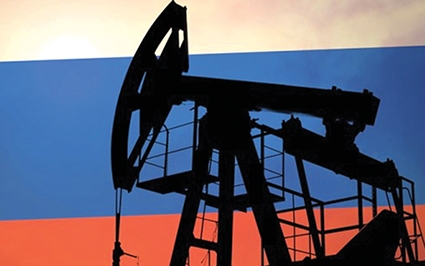The Russian Oil Industry Will Survive, even at $20 per Barrel
A lthough from time to time "oil howling" sees very low prices, for Russia it is unimportant what the cost of a barrel will be, as long as it is no less than $20. This is the minimum "comfort price" for Russian miners, according to a joint report from experts at the Oxford Institute for Energy Studies and Energy Research Institute of the Russian Academy of Science. $30 per barrel, according to their estimates, is enough to maintain the viability of the Russian Federation on the market, while field exploration will be added and development of new areas will increase profits.
The matter is seen differently by various producers: some work offshore, others - not, some are large, others –not. Accordingly, the ideal price for oil for each will vary.
For example, for the largest oil company, Rosneft, which has solid cash supplies and a lot of "daughters" throughout Russia, mining is comfortable even at $10 per barrel, and Lukoil could survive at $9-12 per barrel, says the Russian-British experts board in its report, ‘The Russian oil industry – 2020,’ published on the website of the Oxford Institute for Energy Studies on February 21. However, none of the stated prices take into account investment in new projects, and they are comfortable only if the target is to increase production and not to develop.
“On average, a barrel of oil produced in Russia even at a price below $10 is profitable. Moreover, taking into consideration that the cost of mining at a level of $6 per barrel is not enough for development, it is clear that investment in new projects is only possible at a price of around $20 per barrel,” the authors of the study say.
However, the declining production in traditional fields means companies are “paying more attention to the shelf. The large distance between oil and (lack of) infrastructure necessitates much more money. For example, the Arctic deposit Prirazlomnoe is able to survive at a price of $25 / bbl.,” claimed Gazprom Oil head, Alexander Dyukov, in an interview with Vesti 24 back in December 2015.
It turns out that all oil companies have an incentive to maintain and increase production at a price much below $30 per barrel, analysts conclude. In this case, even at a price of $10, they not only cover the costs of production and transportation, but also receive a net profit. For example, for $10, according to the calculations of the Oxford experts, profit is $0.9; at a cost of $20 - $ 5.9; at $ 30 - $ 6.9.
Representatives of Rosneft, Gazprom Oil, Lukoil, and Surgutneftegaz declined to comment on the Oxford report.
“The fact is that as soon as quotas of black gold step over the $15 per barrel mark, taxes are automatically reset to zero, and vice versa - if it rises above the budgeted amount (in 2017-2019 $40 per barrel), the budget gets the windfall. Thus the price of oil at $55-60 per barrel is the most comfortable,” said Alexander Novak, Minister of Energy of the Russian Federation in December.
If we assume that the tax burden won’t change, it can be difficult not to agree with the estimates. Indeed, in Russia, the majority of deposits are produced at very low cost, and Russia in this regard is very competitive in comparison with other regions.
“In the North Sea brownfield transaction costs, on average and excluding capital investments in new deposits, are up to $25-30 a barrel, about the same as the major European oil companies, which, even with the decline in cost, still sell at about about $25 / bbl.,” said a Fitch Ratings analyst.
“Russian oil will definitely have a lower break-even: the most competitive, taking into account the increasing number of traditional deposits and government support, is Rosneft. Among the most unstable are likely to be smaller companies,” says Stanislav Mitrakhovich, a leading expert of the National Energy Security Fund.
Dimitri Dolaberidze











